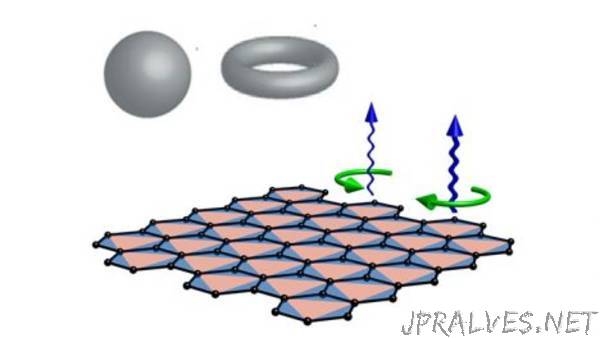
“Researchers at Universität Hamburg have demonstrated a new scheme for measuring the topological index of a system. The index describes the topological nature of materials and influences certain properties such as the conductivity. The scientists report their findings, which may lead to important applications in metrology and possible prospects for quantum computers, in the journal Nature Physics.
The experiments were performed with ultracold atoms in optical lattices formed by standing waves of light. The researchers subject the system to an additional circular drive and then determine the topology from how fast the system heats up. Illustration: UHH/Sengstock group
Among the branches of mathematics, geometry is the one that deals with local properties of shapes like distances, angles and curvatures, while topology classifies shapes according to global properties. The pivotal question is, whether a shape can be continuously deformed into another without cutting or gluing it. The number of holes in a surface, for example, cannot change under continuous deformation.
Geometry and topology apply also to quantum states, because they characterize certain properties. Topological indices are of particular interest: analogous to the number of holes in a surface, which can only take integer values, these integers describe the topology of the system. A well-known example are quantum Hall systems, where the conductivity takes on integer values, because it is dictated by the topological index.
The experimental team around Prof. Klaus Sengstock and Dr. Christof Weitenberg from the cluster of excellence “Advanced Imaging of Matter” has now demonstrated a new scheme to measure the topological index. They collaborated with the theory team led by Dr. Nathan Goldman from the Free University of Brussels, who provided the theoretical background for the new measurement scheme.
The experiments were performed with ultracold atoms in optical lattices formed by standing waves of light. These atoms behave like electrons in a solid-state crystal and can therefore emulate phenomena of solid-state physics. The researchers induced the topological properties by periodically driving the systems, a scheme that other researchers in Hamburg use for inducing topology in graphene sheets by illuminating with laser light. As a result, the index changed from 0 to 1 or -1. For the measurement scheme, the researchers subject the system to an additional drive and then observe how fast the system heats up. From these excitation rates it was possible to obtain the topological index of the system.
“This is a promising result,” Weitenberg explains. “It could help us to detect novel topological states of matter, first realized with ultracold atoms. However, the method can be applied to real materials as well.” Text: CUI”
